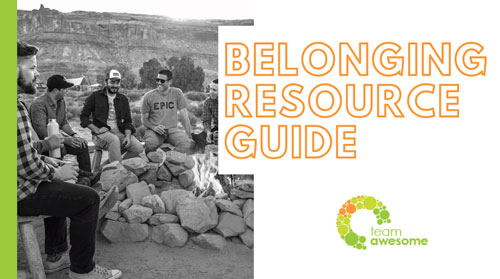People LOVE to take personality assessments, and many companies employ them to help coworkers better understand how to interact with each other. However, it can be easy to enjoy the experience of taking the assessment and then put it back on the shelf and go about “business as usual.”
How do you know what assessment to take or use with your team? And what do you do with it beyond the assessment to make sure that personal development continues? Here I will share some of my favorite assessments, and their best attributes. And for those of you who are curious, I share my assessment profile types.
DiSC
There are a few varied DiSC assessment models (I use the Wiley Everything DiSC) that use the same categories, including Dominance, Influence, Steadiness, and Conscientiousness. This is a language a lot of people know, and shows a relatively simple model on personalities, making it easy to understand. The Everything DISC offers a great analysis report, and has some of the best tools to show how to interact with other personality types with the online team collaboration tools. If you have people who need to know how to approach each other better, this is a great solution. There are also leadership, 360-degree, and team tools that provide extensive insights without having to go to a separate assessment tool.
What’s my profile? I am an Si (with some C), which is best described by words like support, collaboration, enthusiasm, and accuracy.
StrengthsFinder (Gallup)
I have always enjoyed using StrengthsFinder as a way to bring teams together with their natural talents. The website also has a lot of really useful exercises and information to use, for free. If you have a facilitator within your group, have them select short activities to bring to staff meetings once per month and keep the conversation going about Strengths. I like StrengthsFinder because it is very positive, easy to discuss with teams, and the online tools are so robust. One downside is that I often see teams struggle with keeping Strengths-based teamwork going because I feel the model underplays how people respond to each other in stress.
What’s my profile? My Strengths are Individualization, Learner, Strategic, Relator, Responsibility. I have taken it three times in my life, and although the order of the strengths have varied, my top five have remained unchanged.
MBTI (Myers-Briggs)
Myers-Briggs Type Indicator (MBTI) is one of my favorite assessments because of its detail and specified divisions of personality types. As an introvert, I feel as if this element is left out of or misunderstood by other assessment tools and MBTI provides me with a most specific personality type. This has created a bit of a cult-like following in some cases; people who love MBTI know the types and use them to find their people or describe experiences. You can read blogs, twitter feeds, and websites dedicated to just one MBTI personality type (literally, just google your type to find your tribe).
What’s my profile? I am an INFJ (Introversion/Intuition/Feeling/Judging), which incidentally is the rarest MBTI personality type at about 1.5% of all respondents. It makes perfect sense to me that no other assessment really quite felt like my truest truth before this one because of the niche specificity it offers.
Energy Leadership Index
You may not have heard of this one before, but you need to! The Energy Leadership Index is an attitudinal assessment that measures how you show up in the world, both under normal circumstances and under stress. Since it measures your attitude and beliefs, not personality type, it is less about how you interact with others and more about your own experience in the world. Personalities are relatively fixed, but your attitude can change over time, and the fact that you can actually do something about it is the value of this assessment. I use this with clients in the beginning of coaching engagements, and it guides our coaching topics so that we strategically work towards adjusting areas of life to improve satisfaction. Participants can take it again in the future and see how it has changed, particularly after doing the work through a coaching engagement. [*Note: The Energy Leadership Index has to be administered by a certified Energy Leadership Index – Master Practitioner.]
What’s my profile? My primary energy level is Level 5, with a secondary Level 6. Under stress, I default to Level 1. If you aren’t familiar with the assessment, it means I focus on opportunity, win-win, intuition and creativity in my normal day. When I am stressed, I like to hibernate.
Tips for Ongoing Use of Assessments
Once you have done the initial collaboration with your team’s results in hand, it can be easy to check the box and move on with your work. Here are a few easy ways to bring the discussion into your everyday leadership to keep personal development alive:
- Use it in one-on-ones: Print your own copy for anyone on your team, and review it before your scheduled one-on-one time. You can ask questions and revisit it regularly so you team knows that it is important to you and you will continue to refer to it.
- Do the assessment every time the team changes: If you add a new person to the team, make sure they complete the assessment, and do a recalibration with the whole team. Remember, a team is a new unit every time someone leaves or joins, and requires attention at that time.
- Use common language: For organizations with established leadership competencies, that is usually the common language that people use to discuss behavior and results. However, if your organization doesn’t have that structure in place, you can use this as a common language to discuss behavior and results instead, which keeps it alive in your culture.
- Drop any judgement: Make sure that there is not a culture of judgement for any of the assessment categories. If people feel that it is not “good” if they are a High D (DiSC), have a “Woo” strength (StrengthsFinder) or that they have certain energy levels, they will be less willing to participate for fear of being labeled the bad personality type.
Of course, there are many other valuable assessments out there, but I wanted to share a few of my tested favorites with you and provide some strategies on how to keep the personal growth going beyond simply taking the assessment. Use these tips to get the most out of your assessment results!
About the author:
Katie Rasoul is the Chief Awesome Officer for Team Awesome, a leadership coaching and culture consulting firm. Find out more by visiting www.teamawesomecoaching.com or join the Team Awesome Community for awesomeness coming straight to your inbox. Follow Team Awesome on Facebook and Twitter.
Katie is a facilitator of Everything DiSC workplace and an Energy Leadership Index – Master Practitioner. Check out our website to learn more about these assessment offerings: http://bit.ly/2wZjwmo



Recent Comments